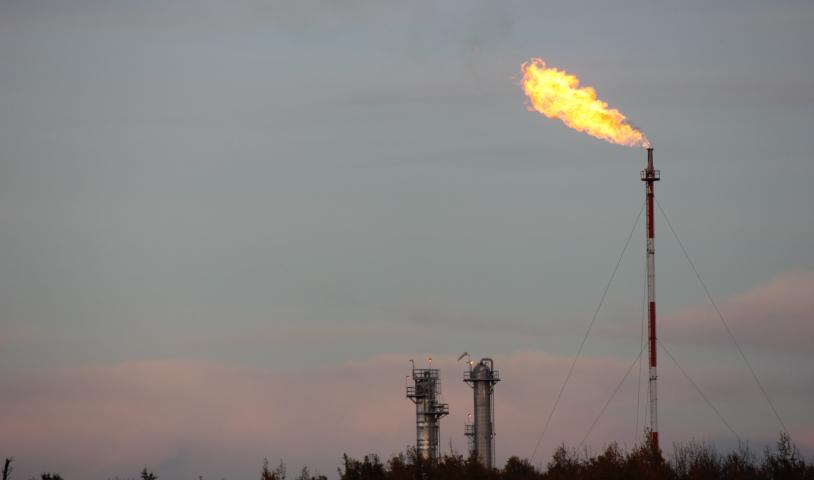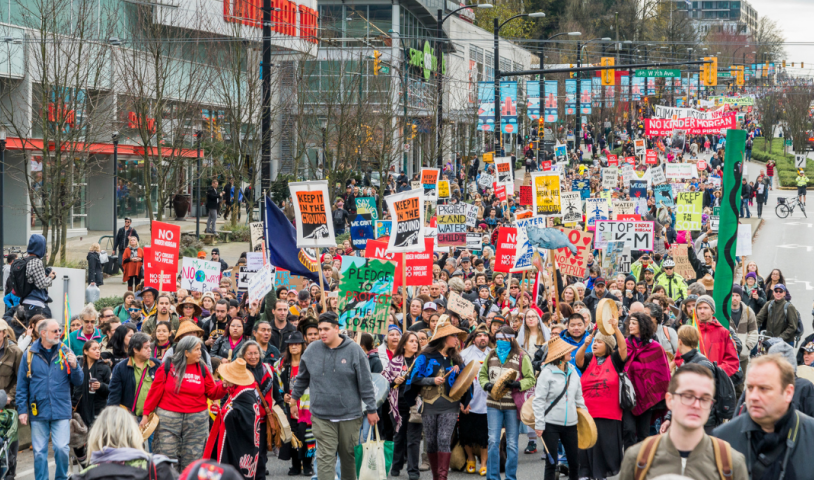Site C: Both sides give media tour
Monday, November 16, 2015
FORT ST. JOHN – When BC Hydro opened its doors to the media last week to view the work taking place on the controversial Site C project, it set the ball rolling for the Peace Valley Landowners Association to respond by having their own media tour.
BC Hydro opened its doors on Friday, Nov. 6 to the media for the first time since the Clean Energy Project was proposed and work began.
During the two hour tour, local media were given a chance to ask questions, take pictures and learn about what the site will look like and do for the community.
“We’re only doing this tour for local regional, we thought it was important to do that first,” said Dave Conway, community relations manager for Site C.
Once on site, the media was shown around the north bank side near the convergence where the Moberly and the Peace Rivers meet.
On Thursday, Nov. 12, those protesting the dam that would flood over 5,000 acres of land, along with representatives from Amnesty International (AI), Sierra Club of B.C. and the Wilderness Committee, also invited the media out on location to a farmer’s field overlooking the site. AI, who has been working closely to protect the rights of indigenous people across the country have been working on a national campaign to stop the construction.
“This project represents such a blatant demonstration of disregard for rights that are meant to be protected in Canadian law, protected under Treaty 8, protected under the constitution and also under international law,” said Craig Benjamin with Amnesty Canada.
During the BC Hydro media brief, however, Conway explained that the dam will be a benefit the community but that it is only part of a larger picture. In the upcoming years, a transmission line component will run from the project generating station up to the Peace Canyon Dam near Hudson’s Hope.
“There will be two 500,000 volt lines that need to go in. On Highway 97, there is a realignment of approximately 30 km of a 60 km stretch between Lynx Creek down to Bear Flat, so those need to be realigned,” he said.
“There’s numerous components and some of these…activities are focusing around the dam site area on the north and south bank side and other sections will occur…over the coming years,” he said referring to the impacts Hudson’s Hope will see by year two.
The site, which will take nine years to build and 70 years to pay off, is now seeing building happening on the temporary workers camp. The 600 workers will be housed in the temporary modular units until the permanent camp can be completed and that has those protesting the site concerned.
“To see a project of this scale and magnitude going ahead without even properly considering the those treaty rights much less standing up and protecting those rights, is ultimately shocking,” said Benjamin.
While the conflict continues on both sides, according to Chris Blake, a contractor with engineering firm WSP, those who are involved with the construction, are happy to work locally.
“There’s no real conflict on site or people who are trying to go against the dam because reality is, it’s paying everyone’s rent, whatever else they have go on,” he said.
The days are long for the workers who start their days at 6 a.m., to meet at the head office in town and pick up supplies. After they get to the site, the 12-hour work day begins regardless of the weather.
“I’ve been surveying for years, so we’re naturally a hearty bunch. We’re used to walking around the bush in extreme conditions a lot worse than this,” said Blake, chuckling.
The project, which has seen its first 100 days of construction come and go, is well on target with the worker accommodations and laying the infrastructure – much to the landowner association and First Nation communities’ chagrin.
“The Peace Valley is one of the few last remaining areas they can exercise the rights that are meant to be protected under the treaty. This is an area that people can come, they can hunt, they can fish, they can gather plant medicines,” said Benjamin.
The Amnesty Canada representative explained that the valley is where the community elders can teach and hand down traditions to ensure the culture will survive.
According to the Site C construction principles outline, “we (BC Hydro) will foster a two-way dialogue between BC Hydro and Peace region residents, businesses, property owners, communities and Aboriginal groups to ensure we are aware of local interests, issues and concerns.”
However, to Ana Simeon, with the Sierra Club, that statement doesn’t mean much to her.
“It’s a vanity project,” she said, noting that the environmental impact to the area is in dire need.
Simeon said she came to out to ensure that both sides of the debates were heard.
“I wanted to come since BC Hydro had given this tour and put their story forward, I wanted people to hear our story as well,” she said.
“We wanted to see what it actually looks like on the ground and what it’s like for the land owners and the First Nations to watch the destruction,” added Simeon.
The work to the dam will see a flux of work depending on seasonal variations and according to Conway, the peak will be years five and six, thus causing an influx of traffic especially going through the District of Taylor.
“One of the things they (Taylor) identified was the visibility corridor going through town…and the other thing was the potential for limited amount of increase in the fog,” he said.
To combat that potential safety hazard, he explained that through conversations with the communities involved, the hydro company installed message boards.
“We know that there will be a limited increase in regards to traffic volume because of the project but the benefit is to everybody using the highway,” said Conway.
According to Benjamin, along with others in the human rights and environmental community, said after speaking with various First Nations, there is a general sense of feeling muzzled.
“If the dam proceeds, it will violate people’s right to health, because for First Nations, living on the land is part of a healthy life, it’ll violate their right to culture and identity, it’ll violate their land rights,” he said.
“Even before it gets to that, already to date, there’s been a violation of their rights,” he added, noting that there has been a lack of transparency and a lack of ability to voice concerns at every stage in the process.
According to Simeon, she is concerned about not just the human rights impact but also about the financial impact the dam will have.
“Imagine what you can do with $10-billion and I’m sure that… if it goes through, which we still don’t believe and will not accept, but by the time it’s finished, it will cost like $15-billion,” she said.
Blake, meanwhile, said he feels differently about the project. He said he feels that it will give those in need of employment an opportunity and help build the local economy.
“B.C. does need power and although everybody doesn’t want it in their backyard, it has to be in someone’s backyard,” he said.





